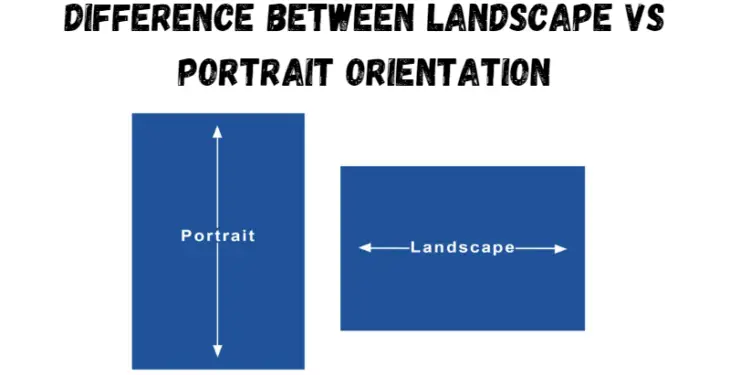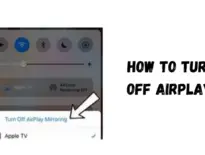In this article, I’m going to go in-depth on what the key differences are between landscape vs portrait orientation. Landscape and Portrait are the types of orientation of a photograph or a print.
The main difference between landscape and portrait image orientation is that a landscape image is wider than it is taller while a portrait image is taller than it is wider.
In other words, out of Landscape vs Portrait Orientation, Landscape images are captured in a horizontal layout while portrait images are captured in a vertical layout. So, what does portrait and landscape imply, and how do these two options impact the composition of a photograph?
I’ll also talk about which of the two orientations is better and when it’s wise to use each one. Further to this, I’ll give you some simple tips and tricks for using your camera or smartphone when shooting in portrait vs landscape.
Above all else, the purpose of this guide is to equip you with the skills and knowledge you need to take your photography to the next level between Landscape vs Portrait Orientation. So, let’s jump in.
The terms portrait and landscape are used in printing to decide the orientation and have existed in photography since it began. What’s more, they’re also used when it comes to printing photos or even just using your household printer to print a document.
Another way to differentiate between Landscape vs Portrait Orientation is by looking around your house; you’ll no doubt have a television and a computer monitor or laptop screen.
Each of these devices has a landscape orientation. Regardless of your television being an ultra-widescreen or not, it’s a rectangular shape that has longer edges on the top and bottom compared to the sides.
Another way to think of it is that it sits horizontally rather than vertically – in which the sides would be longer than the top and bottom.
In photography, the concept of Landscape vs Portrait Orientation is much the same. Let’s take a closer look at each of these in more detail and how they apply to photography.
Read Article: What Does Highlighted Comment Mean on Youtube?
What is a Portrait?
Portrait is when the frame of the image sits vertically – i.e., Landscape vs Portrait Orientation, the side edges are longer than the top and bottom edges. As the name suggests, one of the ideal uses of portrait orientation is for shooting portraits of people.
In this case, the subject is taller than it is wider, and as a result, your photo will turn out the same way. Imagine your head – it’s going to be taller than it is wide. When photographing a headshot or portrait of a face, you generally include the neck, face and hair.
As a result, these combined elements make the head taller than wide and thus more suited to portrait orientation. Framing your face within a portrait is going to look much more natural and will be best framed to ensure the image appears balanced.
Note that taking portraits of living subjects isn’t the only application of this orientation and it can be creatively used on all kinds of objects and scenes.
What is Landscape?
Landscape refers to the orientation of the camera used when photographing subjects such as natural landscapes. Like your television that sits horizontally, the top and bottom edges are longer than the sides.
Generally speaking, the elements of a landscape are much broader than they are taller. Consider you’re viewing a winding river (see s curve photography tips) or mountain range with a pale blue sky above and empty fields in the foreground.
To capture as much of the best parts of the scene as possible, you want to hold your camera in landscape orientation. This way, you capture less of the sky and foreground above and below the mountain range.
This approach of Landscape vs Portrait Orientation makes the mountains the most prominent element in the image and achieves a nice balance to the composition.
What is Better?
As we’ll discover, there are better ways to both create and view photographs and video. It all depends on the intended purpose of the image and how you want to compose it.
The decision to shoot in portrait or landscape should be the first basic rule of composition to think of when taking photos. The same applies to video. Some subjects that you photograph will sit better within a composition that uses portrait format.
Others will look better when captured in landscape mode. With practice, you’ll learn which to choose for the best balance and composition. Of course, there’s no right or wrong decision, but there are some excellent rules of composition to follow.
For example, photographing a tall subject in landscape mode won’t be as pleasing to the eye. The subject will appear to be compressed – the flow of the image will be interrupted by excess space to each side of the subject.
Or, when photographing a broad, wide subject in portrait, it will feel like the subject is trying to bulge out the sides of the composition.
Still confused when is it appropriate to use portrait orientation or landscape orientation? Let’s take a closer look at when to use portrait vs landscape orientation.
When to use Portrait Orientation in Photography out of
Portrait photography means holding your camera so that both it and the image are taller than they are wider. In a way, It’s the opposite of landscape format out of Landscape vs Portrait Orientation.
The genres of photography that commonly use portrait orientation are very simple to remember. The first and most obvious one is portraiture photography.
As we’ve discussed, the human face and head sit more naturally with the portrait composition as they are taller than they are wider. While you can shoot portraits in landscape orientation, and many photographers do, the composition balance can feel off.
To overcome this, you might compose your image so that the subject’s face is off-centre and looking towards the empty portion of the composition. Portrait photography is not the only genre to use this orientation.
When you want to capture a full-body image, such as in fashion photography or couples-portraits, you will use the portrait format. Another example is where you’re photographing a large and tall object.
This might be in a landscape setting where you have a large rocky outcrop or in architecture with a tall building. Getting in a little closer to a tall subject can also result in a very dynamic feel to the image – as though the subject is towering over you.
To distinguish between portrait and landscape orientation, you can ask yourself which orientation style has more height than width. It’s Portrait. On the other hand, the inverse is true for landscape orientation out of Landscape vs Portrait Orientation.
When to use Landscape Orientation in Photography out of Landscape vs Portrait Orientation?
Just as the name suggests, the most common use for landscape orientation is with landscape photography. The prime reason for this is that a landscape setting is usually vast and expansive out of Landscape vs Portrait Orientation.
Lakes, mountain ranges and interesting skies expand across the scene. To capture as much of this as possible and create a dramatic and exciting image, you would use landscape orientation out of Landscape vs Portrait Orientation.
You could use portrait format to capture a landscape scene, but it’s very dependent on the composition. If there’s a tall subject such as a tree or large rock, then a portrait may be a better choice.
It all depends on how you want to best represent the horizontal and vertical elements in the scene. Other photography genres that use landscape include street photography, event photography and group shots.
In street photography, you’re usually operating in an area that has lots of horizontal lines and elements. Streets, buildings and objects moving in a horizontal direction are typical.
Using landscape vs portrait orientation allows you to capture your main subject and have enough going on in the background to tell a story. In event photography and group-shots, you usually have larger groups of people.
To fit them all into the composition, you would rely upon landscape mode. If you used the portrait format, then your subjects would be squished into the frame with unnecessary and unneeded elements in the top and bottom of the image.
While we’ve covered the right times to use both Landscape vs Portrait Orientation in photography, there are times when you can break the rules.
But I highly recommend for those starting out to at first stick to these situational orientations. Then, with trial and error, you can explore what kind of results you get from mixing it up.
Final Words
As we’ve covered here, there are significant reasons why the use of Landscape vs Portrait Orientation in photography is essential. It’s the very first consideration you should make when composing a scene for photography or video. Achieving the most pleasing and dynamically attractive image is all the more possible with the use of correct orientation.
By understanding the difference between Landscape vs Portrait Orientation, you’re far more likely to produce creative images and elevate your photography or videography game to the next level.






